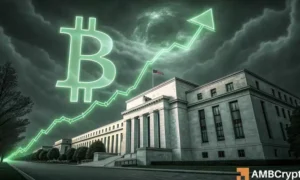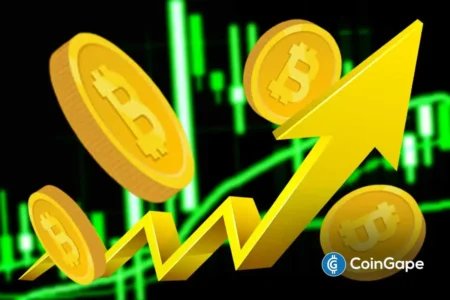Satoshi-Era Bitcoin Whales Stir Market with Massive Movement: What to Watch Next
In an astonishing turn of events, on-chain data reveals that dormant Bitcoin whales from the Satoshi Era have awakened after 14 years, moving a massive 20,000 BTC—about $2.12 billion—in a series of transactions. This unusual activity raises questions about the potential implications for Bitcoin’s future price movements, especially with BTC currently trading around $109,000. Investors are contemplating whether this is merely a wallet transfer or a precursor to a significant sell-off, adding a layer of intrigue to the evolving crypto landscape.
The Awakening of Dormant Bitcoin Whales
The recent activities trace back to a wallet (NY8gD…) that woke up after 14.4 years, resulting in the transfer of 20,000 Bitcoins. Initially, 10,000 BTC worth approximately $1.09 billion were deposited into a new address (TSmxj…) before being moved again to another address (ECyqH…). This wallet made its initial Bitcoin purchase back on April 3, 2011, when each BTC was valued at just $0.78, making the original investment a meager $7,805. This means the whale is now enjoying an astounding profit of around 140,000 times its initial investment, contributing to market speculation regarding future actions.
Investor Sentiment and Market Volatility
As Bitcoin flirts with the $109,000 mark, market sentiment remains highly speculative. Investors are poised for potential price fluctuations, questioning whether BTC could dip to $90,000 or break through to $140,000. Such whale activities frequently trigger waves of speculation about market direction, causing both excitement and concern among traders and investors. The larger question looms: will this massive movement lead to increased selling pressure, or are these transactions indicative of strategic repositioning?
Long-Term Holders and Market Stability
While Satoshi-era whale activity has generated intense buzz, it is crucial to note that long-term BTC holders continue to demonstrate their strength. According to the blockchain analytics platform Glassnode, an impressive 14.7 million BTC are currently held by long-term investors. Importantly, many of these holders purchased their coins at the $100,000 breakout, suggesting a lower likelihood of selling in the near term. This dynamic could provide a buffer against downside risks, potentially allowing for greater upside movement in BTC prices.
Spot Bitcoin ETF Inflows Reach New Heights
Adding another layer of complexity to the current market scenario, spot Bitcoin ETF inflows have surged, with $601 million reported on July 3. Prominent players like Fidelity and BlackRock are leading these inflows, with Fidelity’s FBTC accounting for $237 million and BlackRock’s IBIT pulling in $222 million. BlackRock’s IBIT has been especially successful, accumulating nearly 700,000 BTC and ranking among the top three of its 1,197 ETFs by revenue generation. This influx of institutional capital is likely to reinforce price stability and bolster buyer confidence as the market continues navigating its current phase.
Analyzing Future Market Trends
Given the current flux in the Bitcoin market, traders and investors are advised to closely monitor both whale movements and long-term holder strategies. The interplay between significant whale transactions and robust institutional inflows could influence Bitcoin’s next directional move. While the temporary awakening of dormant wallets does raise red flags about imminent sell-offs, the sustained interest from long-term holders and strong ETF inflows provide a contrasting narrative of stability and bullish potential.
In conclusion, while the recent whale activity certainly raises questions about future market direction, a more nuanced analysis reveals multiple factors at play, including the resilience of long-term holders and the significant institutional interest represented by ETF inflows. As the market awaits its next significant move, it is essential for investors to remain informed and vigilant, balancing speculative caution with a keen eye on emerging patterns.

















